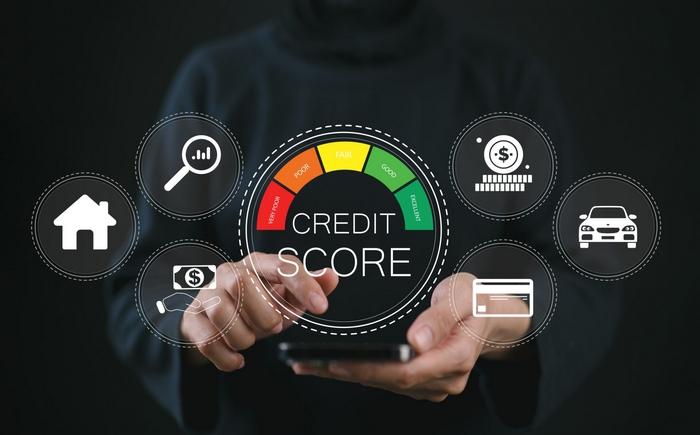Basic Concepts of Credit Scores: Understand Once and for All
Have you ever tried applying for a credit card, car loan, or apartment rental and been asked about your credit score? If you’ve felt lost or unsure about what it means, you’re not alone. Understanding how credit scores work is a game-changer when it comes to managing your financial life in the U.S.
Advertising
Your credit score is more than just a number — it’s one of the most powerful tools you have to access better financial opportunities. A high score can open doors to lower interest rates, higher credit limits, and even more negotiating power. On the other hand, a low score can make things more difficult, more expensive, or downright inaccessible.
Advertising
In this guide, we’ll break down the basics of credit scores in a way that’s simple, practical, and clear. Whether you’re just starting out or trying to recover from past mistakes, this article will help you understand what makes up a credit score, how it’s calculated, and most importantly — how you can take control of it.
What Is a Credit Score?
A credit score is a number that shows how financially trustworthy you are. It tells banks, lenders, landlords, and even employers how well you manage your credit and if you usually pay your bills on time.
Advertising

In the U.S., your credit score typically ranges from 300 to 850. The higher your score, the better. A strong credit score can help you get approved for premium credit cards, lower-interest loans, and even faster approval when renting a place or applying for a job.
What Is a Credit Score Used For?
It’s used to measure risk. Companies want to know:
“If I lend money to this person, will I get it back on time?”
Your credit score answers that based on your financial history.
Real-Life Examples:
- Applying for a car loan? They’ll check your credit score.
- Requesting a new credit card? Your score is part of the process.
- Renting an apartment? The landlord might pull your credit before signing the lease.
How Is a Credit Score Calculated?
The exact formula is a secret, but we do know the major factors used to calculate your score. Here’s a breakdown based on the FICO Score, the most widely used model:
Main Factors That Impact Your Credit Score
| Factor | Weight (%) |
|---|---|
| Payment history | 35% |
| Credit utilization | 30% |
| Length of credit history | 15% |
| New credit inquiries | 10% |
| Credit mix | 10% |
1. Payment History (35%)
This is the most important. Late payments hurt your score quickly.
2. Credit Utilization (30%)
How much of your credit limit you’re using. Try to stay under 30% of your available credit.
3. Length of Credit History (15%)
Older accounts are better. Closing old cards can hurt your score.
4. New Credit Inquiries (10%)
Too many credit applications in a short time is a red flag.
5. Credit Mix (10%)
Lenders like to see different types of credit (e.g., credit card, auto loan, student loan).
FICO Score vs. VantageScore: What’s the Difference?
There are two main scoring models in the U.S.
FICO Score:
- Created by Fair Isaac Corporation
- Used by over 90% of top lenders
VantageScore:
- Created by Equifax, Experian, and TransUnion
- Popular with free credit apps like Credit Karma
Credit Score Ranges in the U.S.
You don’t need to memorize your exact number. Just knowing your credit range can give you a good idea of where you stand.
FICO Score Ranges
| Score Range | Category |
|---|---|
| 300 – 579 | Poor |
| 580 – 669 | Fair |
| 670 – 739 | Good |
| 740 – 799 | Very Good |
| 800 – 850 | Exceptional |
Example:
If you have a score of 690, you fall into the Good range. That’s a solid score, but with a few improvements, you could access even better credit terms.
Why Is Your Credit Score So Important?
Because it affects your money—a lot.
Let’s Compare:
- Score of 580 (Poor): You might get a car loan with 7% interest.
- Score of 750 (Very Good): Your rate could drop to 3%.
That difference on a $30,000 car loan over 5 years could mean thousands of dollars saved in interest.
A low score might also mean:
- Higher insurance premiums
- Denial of rental applications
- Low credit card limits
- More paperwork and delays when applying for loans
How to Check Your Credit Score for Free
There are many free and secure ways to check your credit.
Reliable Sites and Apps:
You’re also entitled to one free credit report per year from each bureau at:
Pro Tip: Apps like Credit Karma provide frequent updates and give you insights into how to improve your score.
Simple Tips to Improve or Maintain a Good Credit Score
Do This:
- Pay your bills on time, every time
- Keep credit usage below 30% of your limit
- Keep older accounts open, if possible
- Space out credit applications
- Use a mix of credit types
Avoid This:
- Missing due dates
- Maxing out your credit cards
- Closing old accounts without a plan
- Applying for several cards in a short time
Quick Credit Stats You Should Know
- The average U.S. credit score in 2023 was 714 (Experian).
- Only 1.6% of Americans have a perfect 850 score.
- People with excellent credit can save up to $45,000 in interest over their lifetime (LendingTree).
Final Thoughts: Your Credit Score = Your Financial Health
Your credit score isn’t just a number. It’s a snapshot of your financial responsibility.
A good score can help you save money, access better credit, and build a solid foundation for your financial future.
No matter where your score stands today, with knowledge and small habits, you can climb the ladder—and enjoy the benefits that come with it.





